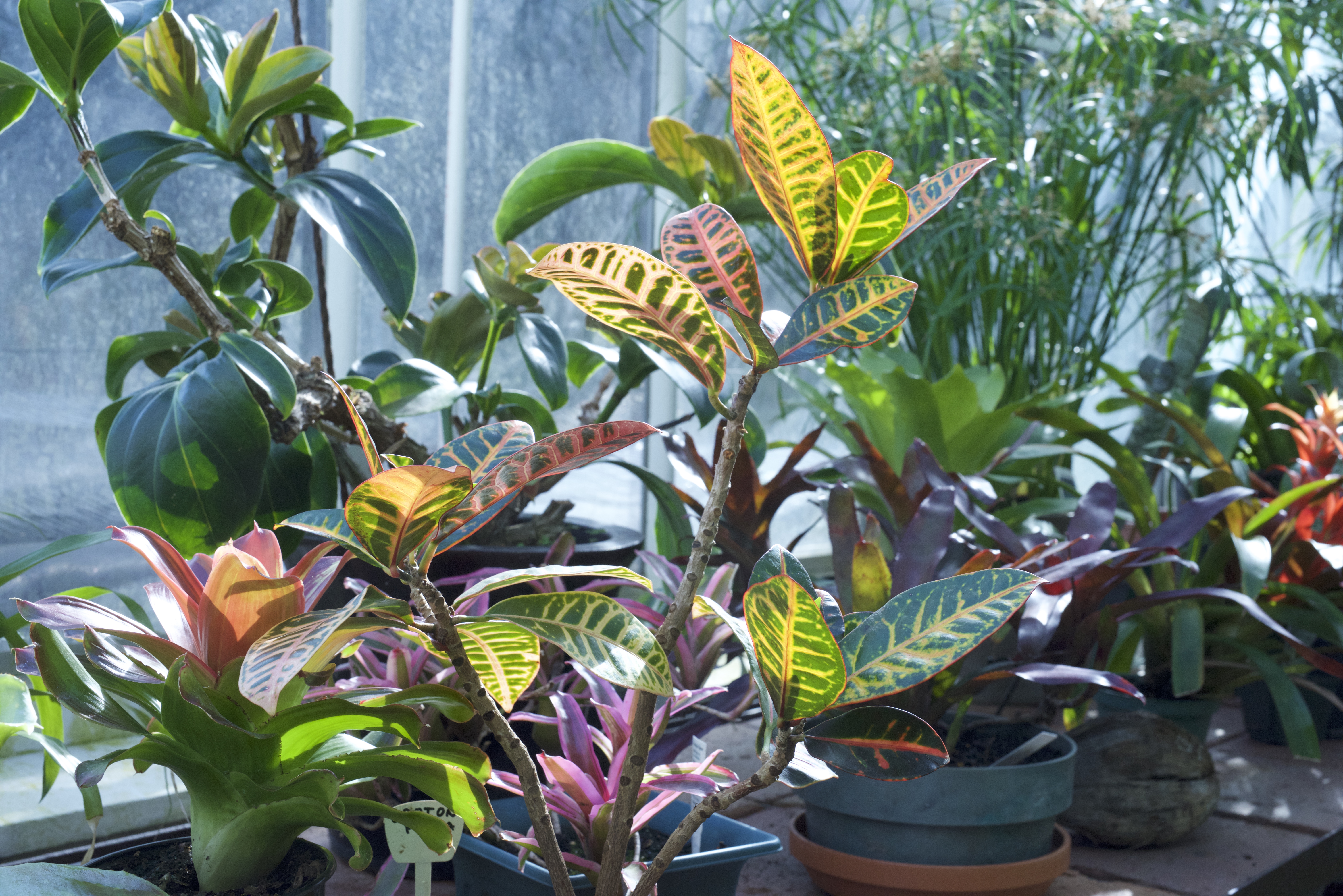Your cart is currently empty!
False Sunflower is a Hardy, Easy Bloomer
False sunflower provides a long summer bloom in a native plant or wild garden or as part of a naturalized planting or prairie area.
Your cart is currently empty!
Photo:
ignartonosbg via Pixabay
Crotons are well-known and loved plants, due in large part to their vivid foliage and intriguing patterns. Most of these plants make excellent houseplants, but they can also be planted outdoors in warmer regions. It requires less maintenance, so it is recommended for beginners. If you’re looking for the perfect plants to add a splash, check out our list of the top six most popular croton plants to grow at home.
Banana crotons (Codiaeum variegatum) are cute plants that are perfect for small spaces. It has light-green oblong leaves covered with yellow spots and speckles. Bananas He plants his crotons in well-drained soil and waters them when the top few inches of soil are dry. A moderate to reasonably high humidity level and a temperature of between 60 and 85 degrees Fahrenheit (20 to 30 degrees Celsius) are ideal. Provide the banana croton with at least 5 hours of bright indirect light. Banana croton can be grown outdoors in zones 10-12. You can grow it even in a bright room. This is a slow-growing plant that grows up to 6 feet tall.

The leaves of Petra croton (Codiaeum variegatum ‘Petra’) are oval and green with bright yellow, red, and orange spots. Originally from Southeast Asia and the South Pacific, it is now found worldwide. The Petra croton prefers bright but indirect sun for at least 5 hours. Maintains temperature between 60°F and 85°F with moderate humidity. It is important to water the soil when the top two inches are dry.
Once a month, fertilize your Petra croton with diluted houseplant fertilizer. This species of croton can be grown and cared for indoors in any region. She can also be grown outdoors in Zones 9B-12. Outdoor petra crotons grow up to 8 feet tall. When growing indoors, the size is limited by the container and environment. Under the right conditions, these plants can grow up to 2 meters tall indoors.

The Zanzibar croton has gorgeous leaves that combine green, yellow, red, and orange. Due to their long leaves, they often resemble ornamental grasses. This croton prefers semi-shade outdoors and indirect light indoors.
These plants prefer temperatures between 60-85ºF and moderate to high humidity. Feed your plants twice a year with an all-purpose fertilizer and let the top few inches of soil dry between waterings. This croton can be grown outdoors year-round in zones 11-12. In other areas, it can be stored outdoors if brought indoors before the first frost. Also, these plants are ideal as houseplants. Zanzibar Croton grows outdoors to a height of 1.80m and a width of 1.50m.

As its common name suggests, Oak Leaf Croton has leaves resembling multiple oak leaves. The leaves are green with bright yellow spots that turn red as the plant ages. People also call this plant his Croton Excellent.
Oakleaf Croton needs bright but indirect sun. Maintain temperature between 60-85°F. Use well-draining potting soil and water liberally when the top 2 inches of soil is dry. Oakleaf croton can be grown outdoors, even indoors, if the temperature does not drop below freezing. It can reach up to the height of 6 feet.

Lauren’s Rainbow Croton has thin leaves on tall stems. Leaves usually have a base color and another color in the middle. Like many crotons, this one prefers partial shade or bright but indirect light. The soil mix for the plant should be kept moist and watered when the top two inches of soil feel dry.
Try to keep the temperature between 55 and 85 degrees Fahrenheit. This croton can be grown indoors with sufficient light and humidity. She can also be grown outdoors in Zones 10-12. Laurens iridescent croton grows up to 5 feet tall and 5 feet wide under the right conditions.

Golddust Croton has dark green foliage that looks like yellow paint splatters. The brighter the place, the yellower the leaves. This croton prefers bright, indirect light for at least 6 hours. If growing outdoors, provide morning sun and afternoon shade. Keep temperatures between 60 and 85 degrees Fahrenheit and moderate to high humidity.
The top few inches of soil should only be watered when it is dry. Zones 10–12 are ideal for growing this croton outdoors. When given enough light, it can also serve as a great houseplant. It grows moderately outdoors in warmer climates and can reach heights of up to 3 meters. It grows slowly and reaches 3 feet.

False sunflower provides a long summer bloom in a native plant or wild garden or as part of a naturalized planting or prairie area.
Discover the secrets to growing beautiful peonies. Learn about dormancy requirements, planting tips, and more.
Find the perfect fall-blooming flowers in September and October to add vibrant colors to your garden until first frost.
Explore the vibrant colors and flavors of fall harvests, from root vegetables to fruits and grains. Learn about traditions, culinary uses, and economic impacts.
Learn about a variety of acid loving plants that add beauty to your garden. From azaleas to hydrangeas, unlock a colorful world of gardening possibilities.
Discover the perfect blend of blood oranges and sugar in this unique recipe, an ideal alternative to Seville Orange Marmalade.
GardeningCalendar.ca gets some funding from advertisers. If you click on links and advertisements at no cost to you, the site may receive a small commission that helps fund its operation.
© 2025 J&S Calendars Ltd.
Leave a Reply
You must be logged in to post a comment.